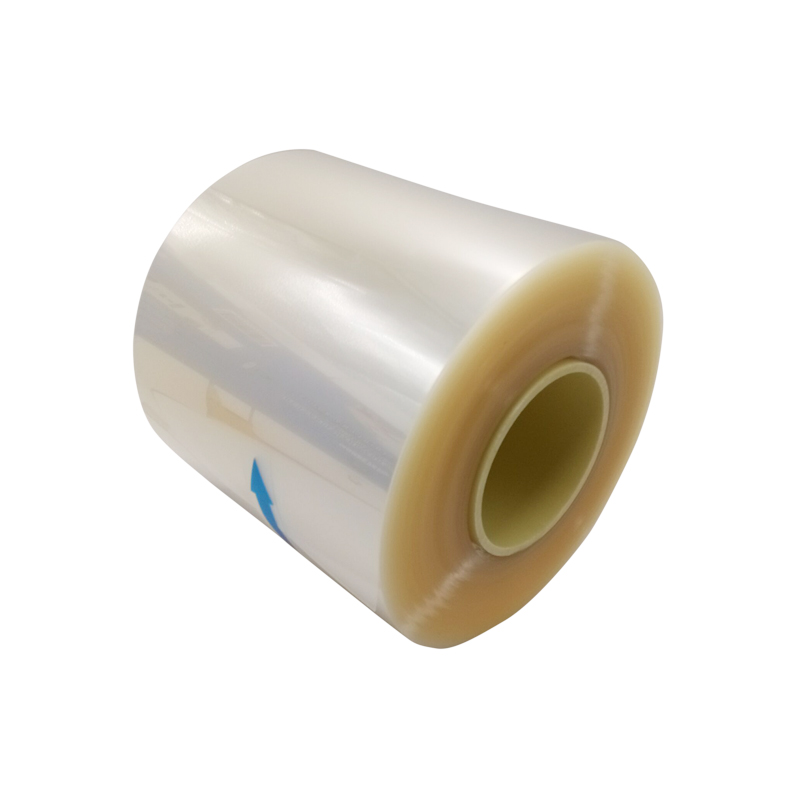光学フィルムコーティングとは何ですか? 光学コーティングによってどのような光学効果が得られるか
xinst2020年6月6日
光学フィルムコーティングは、薄い層状媒体ています。これは、光ビームを界面に伝搬する一種の光学媒体材料です。 光学フィルムの適用は1930年代に始まりました。 現代の光学フィルムは、光学およびオプトエレクトロニクス技術の分野で広く使用されており、さまざまな光学機器を製造しています。

The main optical thin film devices include reflective film, anti-reflection film, polarizing film, interference filter and beam splitter, etc. They have been widely used in the construction of the national economy and national defense, and have received increasing attention from scientific and technical workers. For example, the use of anti-reflection films can reduce the luminous flux loss of complex optical lenses by ten times; the use of high reflectance mirrors can double the output power of the laser; the use of optical films can improve the efficiency and stability of silicon photovoltaic cells Sex.
1. Structure
最も単純な光学フィルムモデルは、滑らかな表面と等方性の均質な媒体を備えた薄層です。 この場合、光学干渉理論を使用して、光学フィルムの光学特性を研究することができます。 単色平面波が光学フィルムに入射すると、その2つの表面で複数の反射と屈折が発生します。 反射光と屈折光の方向は反射と屈折の法則によって与えられ、反射光と屈折光の振幅はフレネルの式によって決定されます。
2.機能
光学フィルムの特徴は次のとおりです。表面が滑らかで、フィルム層間の界面が幾何学的に分割されています。 フィルム層の屈折率は界面で変化する可能性がありますが、フィルム層内では連続しています。 透明な媒体にすることも、
光学フィルム
吸収媒体; 均一に正常または不均一に正常にすることができます。 実際に適用されるフィルムは、理想的なフィルムよりもはるかに複雑です。 これは、次の理由によるものです。準備中、フィルムの光学的および物理的特性がバルク材料から逸脱し、その表面と界面が粗く、光ビームの散漫散乱が発生します。 フィルム層間の相互浸透は拡散界面を形成します。 フィルム層の成長、構造、応力、およびその他の理由により、フィルムの異方性が形成されます。 フィルム層には複雑な時間効果があります。
フィルタの紹介:
必要な放射帯域の光学デバイスを選択するために使用されます。 フィルタの一般的な機能は、すべてのフィルタが特定の波長を吸収し、オブジェクトを暗くするため、どのフィルタも天体の画像を明るくすることができないことです。
フィルターの原理:
フィルターはプラスチックまたはガラスでできており、特殊な染料が添加されています。 赤いフィルターは、赤い光だけを通過させることができます。 ガラス板の透過率はもともと空気と同じで、すべての色光が通過できるので透明ですが、染色後は分子構造が変化し、屈折率も変化し、特定の色光の通過が変化します。 たとえば、白色光のビームは青色フィルターを通過して青色光のビームを放出しますが、緑色光と赤色光は非常に少なく、それらのほとんどはフィルターによって吸収されます。
1つの反射防止フィルム
Also called antireflection coating, its main function is to reduce or eliminate the reflected light from optical surfaces such as lenses, prisms, and plane mirrors, thereby increasing the light transmission of these components and reducing or eliminating stray light from the system.
Second, the optical film
反射防止膜は、最も広く使用され、最大の出力光学膜です。 したがって、それは依然として光学フィルム技術における重要な研究トピックです。 研究の焦点は、新しい材料を見つけ、新しいフィルムシステムを設計し、堆積プロセスを改善することです。 最小の層数、最も単純で最も安定したプロセスを使用して、可能な限り最高の歩留まりを取得し、最も理想的な結果を達成します。 レーザー薄膜の場合、反射防止膜はレーザー損傷の弱点であり、その破壊強度をどのように高めるかも、人々が最も懸念している問題の1つです。
3つの反射フィルム
Its function is to increase the reflectivity of the optical surface. Reflective films can be generally divided into two categories, one is metal reflective film, and the other is all-dielectric reflective film. In addition, there are metal dielectric reflective films that combine the two.
Four, interference filter
It is a type of optical film with the most variety and complicated structure. Its main function is to split the spectral band. The most common interference filters are cut-off filters and band-pass filters. The cut-off filter can divide the considered spectrum into two parts, one part does not allow light to pass (called the cut-off region), and the other part requires light to pass through (called the band-pass region). According to the position of the passband in the spectral region, it can be divided into two kinds of long-wave pass and short-wave pass. Their simplest structures are respectively, where H and L represent thick high and low refractive index layers, and m is the number of periods. The film system having the above structure is called a symmetric periodic film system. If the considered spectral region is wide or the passband transmittance ripple requirements are high, the film structure will be more complicated.
Five, spectroscopic film
According to certain requirements and certain methods, the light beam is divided into two parts. The beam splitting film mainly includes wavelength splitting film, light intensity splitting film and polarizing beam splitting film.
The wavelength splitting film is also called two-color splitting film. As the name implies, it is a film that divides the light beam into two parts according to the wavelength region. This film can be a cut-off filter or a band-pass filter. The difference is that the wavelength splitting film must consider not only transmitted light but also reflected light. Both require a certain shape of the spectral curve. The wavelength splitting film is usually used at a certain angle of incidence. In this case, the spectral curve will be distorted due to the influence of polarization. In order to overcome this effect, the problem of depolarization of the film must be considered.
The polarization beam splitting film is made by utilizing the polarization effect of the film when the light is incident obliquely. The polarization beam splitting film can be divided into two types, a prism type and a flat plate type. The prismatic polarizing film utilizes the polarization effect of the interface when Brewster angle is incident. When the light beam always enters the interface of two materials at Brewster's angle, no matter how many thin film layers there are, the reflected light of the horizontal vibration is always zero, and the light of the vertical component vibration increases with the number of thin film layers. Increased, as long as the number of layers is sufficient, the transmitted light beam can be basically vibrated in the parallel direction, and the reflected beam is basically light that is vibrated in the vertical direction, so as to achieve the purpose of polarized beam splitting. The Brewster angle at the interface of the thin film material, so the film must be plated on the prism, then the incident medium is not air but glass. The flat-type polarizing film is mainly made of the difference in the bandwidth of the reflection bands of the two polarized components of the dielectric reflective film when obliquely incident. In general high-reflection films, as the incident angle increases, the reflection bandwidth of the vertical component gradually increases, and the bandwidth of the parallel component gradually decreases. Selecting the high reflection area of the vertical component and the high transmission area of the parallel component as the working area can form a polarizing film that reflects the vertical component through the parallel component. The incident angle of this polarizing film is generally selected near the Brewster angle of the substrate . The working wavelength range of the prism-type polarizing film is relatively wide, and the degree of polarization can also be made relatively high, but its preparation is cumbersome, difficult to make large, and the laser resistance is relatively low. The wavelength range of flat polarizers is relatively narrow, but it can be made very large and the laser resistance is relatively high, so it is often used in strong laser systems.


